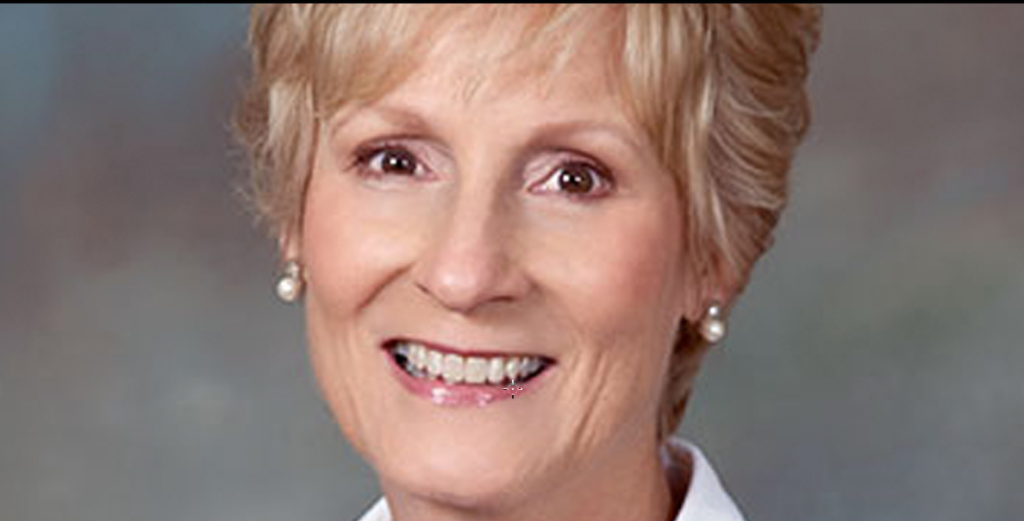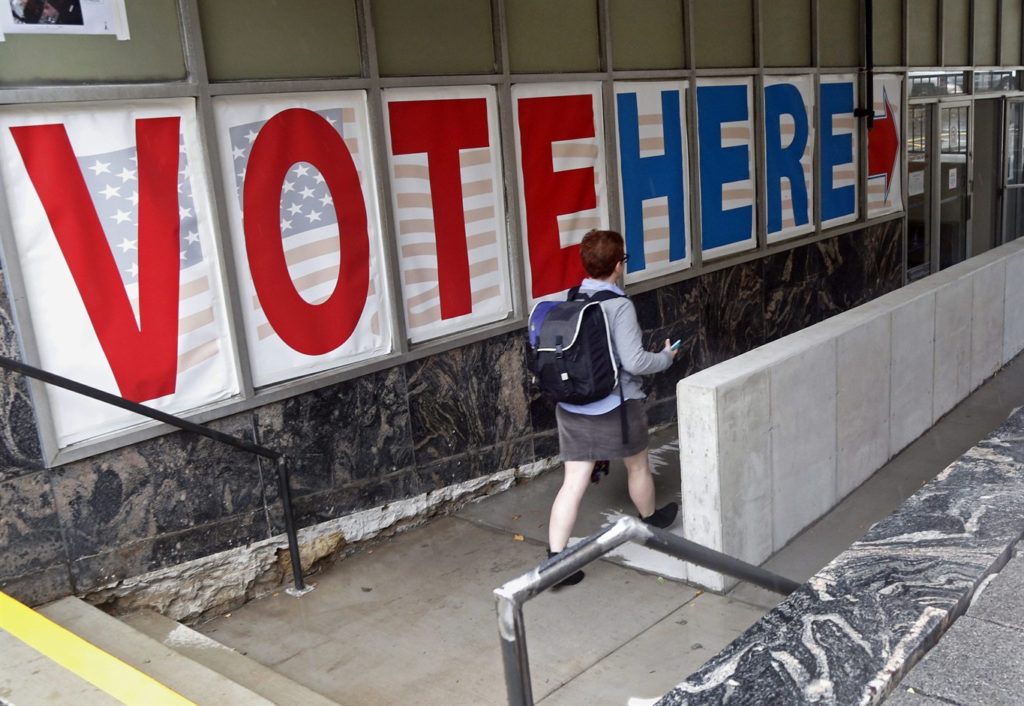Kay Ivey appoints Lynn Beshear Mental Health Commissioner; announces staff changes

Alabama Governor Kay Ivey appointed Lynn Beshear as Commissioner of the Alabama Department of Mental Health on Thursday. “I am honored to appoint Lynn Beshear as Commissioner of the Department of Mental Health,” said Ivey. “Through active participation in securing mental health services in the River Region, Lynn understands the complexities of the Department, and the importance of its work on behalf of the people of Alabama.” Beshear moved from Kentucky to Montgomery in 1978 and has been a key player in the city’s positive development ever since. She has previously served on the board of directors for organizations and establishments including Montgomery Academy, United Way, First United Methodist Church and others. She currently serves on the board of Joint Public Charity Hospital, Montgomery Metro YMCA, and the AUM School of Liberal Arts Advisory Board. She is a founding member of Envision 2020 and currently serves as its Executive Director. “I did not seek out this position, but I am honored to be chosen to serve my fellow Alabamians,”Beshear stated in a press release. “I am excited to work with Governor Ivey, her Cabinet, the Legislature, and the professionals within the Department of Mental Health, to provide excellent services for Alabamians with mental illness, those who are developmentally delayed, and those who struggle with substance abuse.” Among other honors, Beshear was named the Montgomery Advertiser Woman of Achievement in 1993, and received the Maury D. Smith Excellence in Professional Ethics Award in 2016. As Commissioner, Beshear will work toward developing new polices and strive to better existing programs. Ivey also accepted the resignations of Dr. Joanne Hale, as Acting Secretary of the Office of Information Technology, and Neal Morrison, as Commissioner of Senior Services on Thursday. The governor was also notified that Emergency Management Director Art Faulkner will retire effective September 5, 2017. Replacements for these positions have been identified and will be announced in the coming days. Additionally, she accepted the resignations of staff members, Director of Appointments and Scheduling Director. Daniel Sparkman, has been promoted to Press Secretary, replacing Eileen Jones. “I am thankful for the staff members who stayed on to help us make it through this quick transition,” Ivey added. “I am also especially thankful to Eileen Jones for her willingness to join my administration early on to help us get our feet on the ground and off to an effective start; I wish her well in her future endeavors.” The Governor’s Office said they do not anticipate any additional changes to the Cabinet or staff as the Ivey Administration finishes taking shape.
Group wants Alabama to educate voters about new voting law

A voting rights group has asked a federal judge to force Alabama to tell people that they could be eligible to vote after previously being disqualified for a felony conviction. U.S. District Judge W. Keith Watkins on Wednesday scheduled a July 25 hearing on the Campaign Legal Center’s injunction request. The Campaign Legal Center last week asked Watkins to require the state to implement an education campaign and take other steps, after lawmakers approved legislation clarifying which felonies cause a person to lose voting rights. The group also asked the state to reinstate eligible voters and disclose all voter registration applicants and voter registrants who were denied the right to vote on the basis of conviction in the past two years. “HB 282 has the potential to restore access to the franchise for thousands of eligible voters who should never have been denied their rights in the first place,” attorneys wrote. Alabama is one of a handful of states that permanently strip some convicted felons of their right to vote. The 1901 Alabama Constitution says people convicted of crimes involving “moral turpitude” are no longer able to vote. However, the constitution doesn’t define the term or list any crimes meeting the definition. Politicians for decades squabbled over what was a disqualifying crime. Alabama lawmakers in May approved legislation clarifying that 46 types of felonies will cause someone to lose voting rights including robbery, assault, felony theft and drug trafficking but not offenses such as drug possession. It’s not clear how many people are affected by the new law. The new list is similar to a list that had been given as guidance to county registrars by the secretary of state in an election handbook, but it doesn’t include some previously disqualifying crimes, such as third-degree burglary. The list to registrars was also only guidance, and not state law. The center estimates the new law could restore voting rights to “thousands of eligible voters.” Center officials say they have personally identified dozens who were wrongly told they couldn’t vote. Alabama Secretary of State John Merrill supported the legislation. Lawyers for the state wrote in a court filing that Merrill is “implementing it in a deliberate fashion.” “He is in the best position to determine in the first instance how this law should be rolled out. And, in point of fact, the Secretary of State has already modified the registrars’ handbook for conducting elections to incorporate the new law,” state lawyers wrote. The Campaign Legal Center is representing plaintiffs in a lawsuit filed last year challenging Alabama’s practice of stripping felons of their voting rights. Two of the 10 plaintiffs will be allowed to vote under the new law, but the rest will not. Republished with permission of The Associated Press.
New Alabama mothers encouraged to complete PRAMS survey

Why are some babies born healthy while others are not? That’s a question the Alabama Department of Public Health (ADPH) and the Centers for Disease Control and Prevention (CDC) is hoping to answer. In a joint research project — Pregnancy Risk Assessment Monitoring System (PRAMS) — the ADPH and CDC are asking recent mothers from across the Yellowhammer State for information about things they experienced before, during, and shortly after pregnancy in an effort to improve the health of mothers and infants by reducing adverse outcomes. Alabama is currently one of 47 states participating in PRAMS. As part of the program, mothers with reported births from across the state are randomly selected to answer the PRAMS survey. “If you receive a survey booklet, please complete it,” Alabama PRAMS Data Manager Victoria Brady said. “The information collected is used in developing health care programs and policies, and the results help doctors and nurses improve health care while making better use of health resources.” The types of questions asked are as follows: Attitudes and feelings about the most recent pregnancy Content and source of prenatal care Mother’s alcohol and tobacco use Any physical abuse before and during pregnancy Infant health care Contraceptive use Health care coverage Mother’s socioeconomic situation Postpartum depression Knowledge of pregnancy-related health issues such as nutrition, the benefits of folic acid, infant safe sleep practices, oral health during pregnancy, and the risks of STDs and HIV Answers will be used for research purposes only and grouped with those of other women. Surveys take about 20 minutes to complete, are available in English and Spanish, and can be mailed back postage-free or completed over the telephone. Mothers may not want to answer a particular question, and that is okay. There is no penalty for not answering all questions. Mothers who complete a survey may choose from among three complimentary items— disposable diapers, an insulated cooler, or a manicure set—that are mailed to them in appreciation for their participation. “Every pregnancy is different, as is every birth,” Brady continued. “Your experience may have a profound effect in bringing about a successful pregnancy and delivery for another mom or even for yourself with a subsequent pregnancy. You can play an active role in improving the health and well-being of Alabama women and babies.”
Alabama ranked near bottom of list of best states for startups, small business

A financial website ranks Alabama as one of the least favorable places for starting a business in the U.S. The study announced this week by personal finance website WalletHub ranks Alabama as the 42nd best state for startups in 2017. Grading on a 100-point scale, WalletHub used 20 key indicators of startup success to come up with its “2017 Best & Worst States to Start a Business,” averaging the score on each — with 100 being best. Metrics include office space expense, incentive spending, financing, an average length of the workweek, availability of human capital and the growth in the number of small businesses. On that scale, Alabama scored 40.92 points — last in Business Environment, 31st in Access to Resources and ninth in Business Costs. Alabama is among the bottom five states with the lowest average growth in the number of small businesses. However, the Yellowhammer State ranked in the top five for lowest labor costs, along with four other Southern states. In relation to some of its neighbors, Alabama listed at or near the bottom: Florida is sixth, Georgia is eighth; Tennessee and Mississippi were 27th and 28th respectively. Maryland, New Hampshire and New Jersey ranked lowest overall. The company also asked a panel of nine experts for their business insights on four key questions: Do you believe that the economic policies being pursued by the Trump administration will promote new-business development? To what extent do state policies, such as corporate tax rates, influence decisions about whether and where to start a new business? Are tax breaks and other incentives to encourage new businesses on net a good or bad investment for states? What measures can state authorities undertake in order to encourage entrepreneurs to start new businesses in their state? Answers are available at WalletHub.com. Source: WalletHub
Luther Strange proposes using federal funds to sanctuary cities to pay for border wall

U.S. Sen. Luther Strange is proposing to take federal funding that would go to so-called “sanctuary cities” – those that are not following U.S. immigration law – and use it for President Donald Trump’s promised wall on the country’s southern border. “How many innocent American lives must be lost before security becomes the first priority of immigration?” the Alabama Republican told an audience at a Heritage Foundation event last week. “How many criminal aliens have to be released shy of justice being served for the rule of law to be affirmed as the first priority of a functioning society?” In May, Strange introduced a bill that would keep federal funds going to sanctuary cities that fail to comply with Justice Department directives on immigration law or prevent money going to municipalities that retaliate against small businesses for submitting bids in the construction process for Trump’s border wall. As reported in the Daily Signal, Strange spoke at the event, titled “Securing the Border and Protecting Our Communities,” saying: “My bill has two simple outcomes. Sanctuary jurisdictions can either follow the law or fund the wall. Failure to comply with federal immigration authorities and continued efforts to interfere with the lawful pursuit of border wall contracts by local businesses will be met with the loss of federal transportation and infrastructure grant funding. These funds will go toward the construction of our border wall.” Strange explained that the legislation would be a fiscally conservative way to pay for Trump’s border wall. “I want to be clear about that, these are not funds to pay for emergency preparedness, health care, or public safety,” Strange added. “They are transportation and infrastructure funds, and they will be going to fund a major infrastructure project.” Luther did not give a timetable for construction of the wall but acknowledged the project is still Trump’s top priority. “I have not heard anything except the president say publicly and personally that he’s going to build the wall,” Strange told the crowd. “People in Alabama have certainly not forgotten that promise, and it is a critical commitment to our people.” Strange called for the rule of law to prevail in U.S. immigration policy. “The fact that citizens and others who are here lawfully might be harmed by an unlawful measure picking winners and losers in the name of illegal immigration is the height of irony and liberal hypocrisy,” he said.
Russia-U.S. ties zigzag wildly during Putin’s rule since 2000

President Donald Trump will become the fourth American leader that Russian President Vladimir Putin has faced since taking the helm in 2000 when they meet on the sidelines of the Group of 20 summit on Friday. Under Putin’s watch, U.S.-Russia ties have zigzagged wildly between periods of tensions and relative warmth. A brief glance at the ebb and flow of those relations since 2000: — EARLY HOPES When Putin was first elected in March 2000, U.S.-Russia ties were bitterly strained over the U.S.-led NATO’s bombing of Yugoslavia in 1999. Those tensions contrasted with friendly relations between Moscow and Washington under President Bill Clinton and Russia’s first president, Boris Yeltsin, throughout the 1990s. Putin quickly sought to establish warm ties with Clinton and other Western leaders. When Clinton visited Moscow in June 2000, the Russian president even suggested that Russia could join NATO – a proposal that has failed to get traction. In July 2000, Putin tried unsuccessfully to persuade North Korea to abandon its missile program when he paid a surprise visit to Pyongyang en route to the G-8 summit in Japan. — BRIEF PARTNERSHIP Soon after President George W. Bush‘s inauguration, Putin met with him in Slovenia in June 2001. The meeting helped establish friendly ties, with Bush famously saying that he came to trust Putin after looking him in the eye and getting a sense of his soul. Putin became the first foreign leader to call Bush after the Sept 11 attacks, and he welcomed the U.S. deployment to formerly Soviet Central Asia for the war in Afghanistan. In another goodwill gesture, Putin shut down Soviet-era military facilities in Cuba and Vietnam. U.S. missile defense plans cast a shadow over otherwise warm ties, but Russia and NATO signed a 2002 pact that set up a joint council to tackle common threats such as terrorism and nuclear proliferation. — TENSIONS RISING The U.S. invasion of Iraq in 2003, which Russia criticized, marked a turning point and ties began to sour. Moscow viewed the 2004 Orange protests in Ukraine against a fraudulent presidential vote as an attempt by Washington to expand its clout and hurt Russia’s interests in the former Soviet nation. The tensions kept boiling and a brief war between Russia and Georgia in 2008 led to a freeze in Russia-U.S. relations. — A RESET AND A NEW COLD WAR President Barack Obama moved to “reset” ties with Russia soon after his election, visiting Moscow in July 2009. Even though Putin continued to call the shots as prime minister, Obama focused on building warm ties with Putin’s ally, President Dmitry Medvedev. When Medvedev stepped down in 2012 to let his mentor reclaim the top job, Putin accused the U.S. of fomenting mass protests in Moscow against his return to the presidency. U.S.-Russia relations steadily degraded as the Kremlin moved to stifle dissent, tighten restrictions on foreign nongovernmental organizations and ban U.S. adoptions of Russian children. They plunged to a new low in 2013 when Russia granted political asylum to NSA contractor Edward Snowden despite U.S. requests for his extradition. When Ukraine’s Russia-friendly president was driven from office in February 2014 after months of protests, Putin blamed the U.S. for engineering his ouster. Moscow quickly annexed Ukraine’s Crimean Peninsula and offered support to pro-Russia separatist insurgents in eastern Ukraine, triggering Western sanctions. — TRUMP AND RUSSIA The Kremlin has rejoiced over Trump’s victory in the U.S. presidential election after his campaign promises to improve ties with Russia. But U.S. congressional and FBI investigations into Trump campaign officials’ links with Russia thwarted Putin’s hopes for a quick meeting, making the G-20 summit in Hamburg, Germany, the earliest possible venue. Putin has denied meddling in the U.S. vote and criticized the Democrats for failing to acknowledge the mistakes he says helped Trump win. He has praised Trump and voiced readiness to cooperate with the U.S. on stabilizing Syria, fighting terrorism and tackling other global issues. Republished with permission of The Associated Press.
North Korean missile advances put new stress on U.S. defenses

North Korea’s newly demonstrated missile muscle puts Alaska within range of potential attack and stresses the Pentagon’s missile defenses like never before. Even more worrisome, it may be only a matter of time before North Korea mates an even longer-range ICBM with a nuclear warhead, putting all of the United States at risk. The Pentagon has spent tens of billions to develop what it calls a limited defense against missiles capable of reaching U.S. soil. The system has never faced combat or been fully tested. The system succeeded May 30 in its first attempted intercept of a mock ICBM, but it hasn’t faced more realistic conditions. Although Russia and China have long been capable of targeting the U.S. with a nuclear weapon, North Korea is seen as the bigger, more troubling threat. Its opaque, unpredictable government often confounds U.S. intelligence assessments. And North Korea’s leader, Kim Jong Un, has openly threatened to strike the U.S., while showing no interest in nuclear or missile negotiations. “We should be worried,” said Philip E. Coyle III, a former head of the Pentagon’s test and evaluation office. North Korea’s latest success, he said, “shows that time is not on our side.” U.S. officials believe North Korea is still short of being able to miniaturize a nuclear warhead to fit atop an intercontinental missile. And it’s unclear whether it has developed the technology and expertise to sufficiently shield such a warhead from the extreme heat experienced when it re-enters Earth’s atmosphere en route to a target. A Pentagon spokesman, Navy Capt. Jeff Davis, said Wednesday: “We’ve still not seen a number of things that would indicate a full-up threat,” including a demonstrated ability to mate a nuclear warhead to an ICBM. “But clearly they are working on it. Clearly they seek to do it. This is an aggressive research and development program on their part.” Davis said the U.S. defensive system is limited but effective. “We do have confidence in it,” he said. “That’s why we’ve developed it.” The Trump administration, like its recent predecessors, has put its money on finding a diplomatic path to halting and reversing North Korea’s nuclear program. While the Pentagon has highly developed plans if military force is ordered, the approach is seen as untenable because it would put millions of South Korean civilians at risk. But diplomacy has failed so far. That’s why U.S. missile defenses may soon come into play. The Pentagon has a total of 36 missile interceptors in underground silos on military bases in Alaska and California, due to increase to 44 by year’s end. These interceptors can be launched upon notice of a missile headed toward the United States. An interceptor soars toward its target based on tracking data from radars and other electronic sensors, and is supposed to destroy the target by sheer force of impact outside the Earth’s atmosphere. Sometimes likened to hitting a bullet with a bullet, the collision is meant to incinerate the targeted warhead, neutralizing its nuclear explosive power. This so-called hit-to-kill technology has been in development for decades. For all its advances, the Pentagon is not satisfied that the current defensive system is adequate for North Korea’s accelerating missile advances. “The pace of the threat is advancing faster than I think was considered when we did the first ballistic missile defense review back in 2010,” Rob Soofer, who is helping review missile defenses, told a Senate Armed Service subcommittee last month. Beyond what U.S. officials have said publicly about the North Korean nuclear threat, he said the classified picture “is even more dire.” Soofer didn’t provide details. The escalating danger has led the administration to consider alternative concepts for missile defense, including what is known as “boost phase” defense. This approach involves destroying a hostile missile shortly after its launch, before the warhead separates from the missile body and decoys can be deployed. One proposed tactic would be to develop a drone capable of long-endurance flight and armed with a solid-state laser to destroy or disable a missile in flight. These and other possible new approaches would add to budget strains already felt in the missile defense program. President Donald Trump‘s proposed 2018 budget would cut $340 million from missile defense programs intended to deter a potential strike by North Korea, Iran or other countries. The Republican-led Congress has taken the first steps in rejecting the reduction. Rep. Mac Thornberry, R-Texas, the House Armed Services Committee chairman, declared last month that he was “astonished” Trump would propose trimming missile defense. Thornberry’s committee voted last week to provide about $12.5 billion for missile defense in the 2018 fiscal year that begins in October, nearly $2.5 billion more than Trump’s request. The Senate Armed Services Committee also called for millions more than Trump requested. The full House and Senate are expected to consider the committees’ legislation, and the boost in missile defense money, later this month. Republished with permission of The Associated Press.


